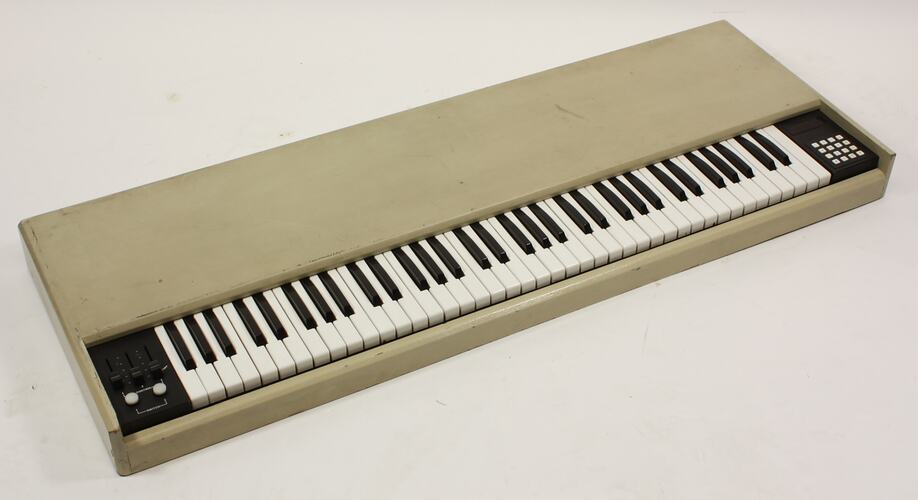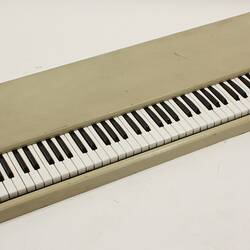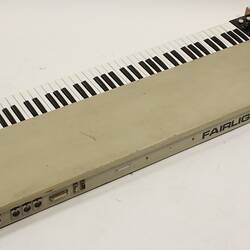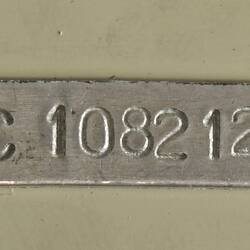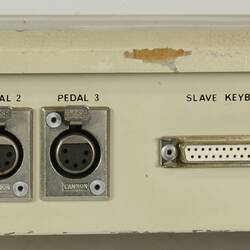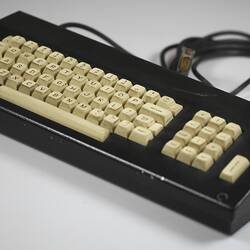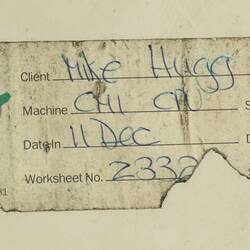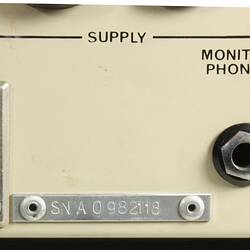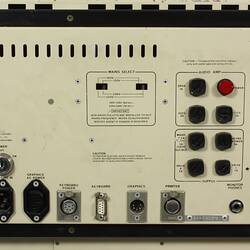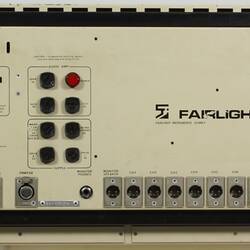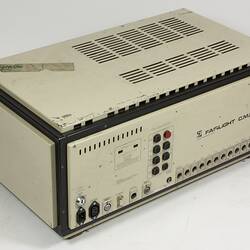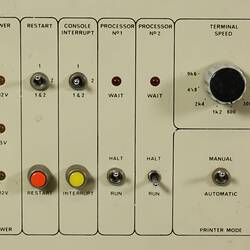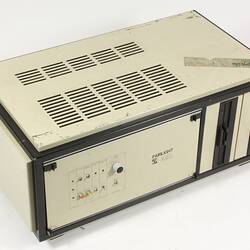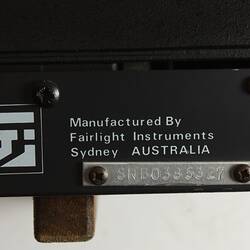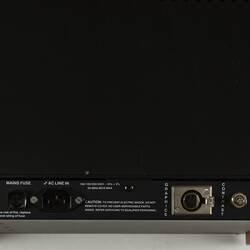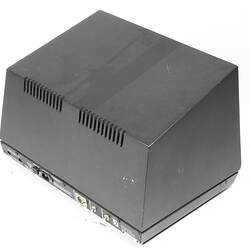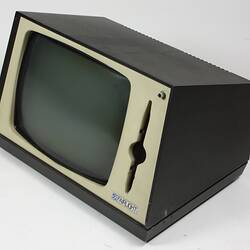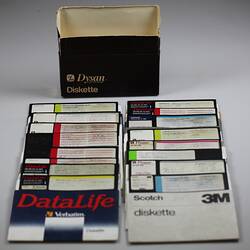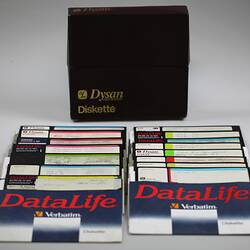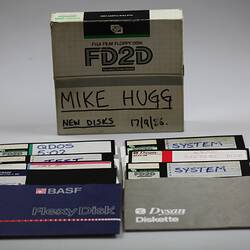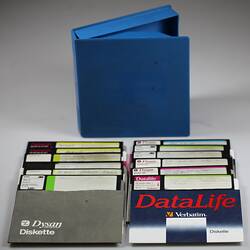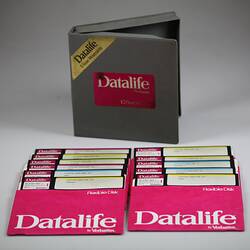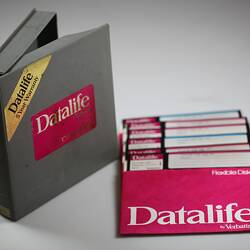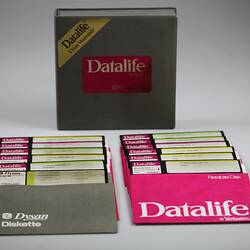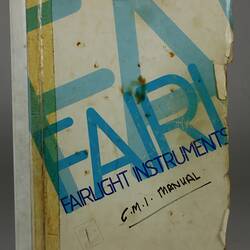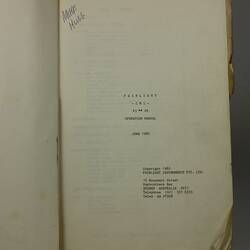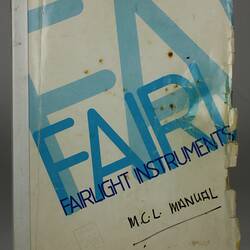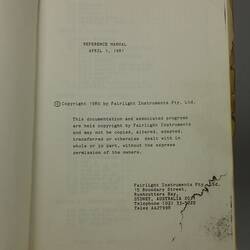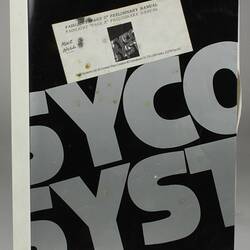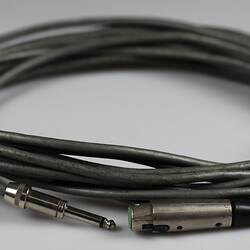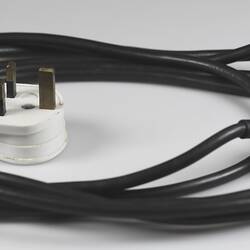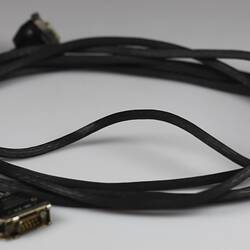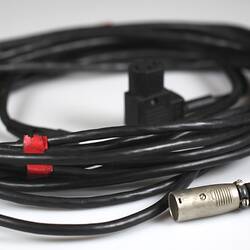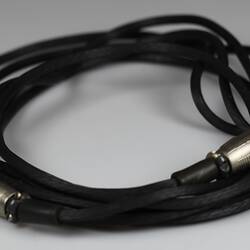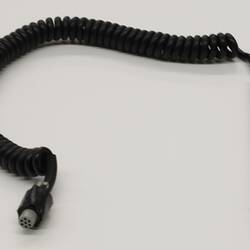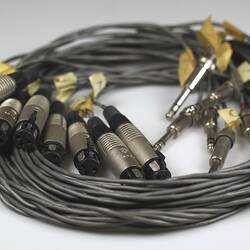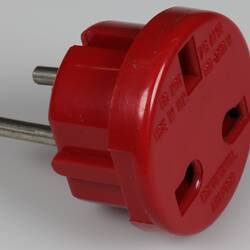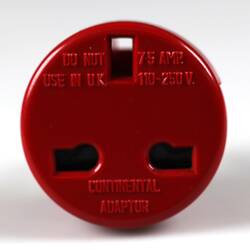Summary
Fairlight C.M.I. (Computer Musical Instrument) which used digital sampling of sounds. The Fairlight was developed in Sydney, Australia, by Kim Ryrie and Peter Vogel in 1979. This Fairlight was previously owned by Mike Hugg, who was co-founder of the pop group Manfred Mann in the United Kingdom. Fairlights were used by a number of well-known popular musicians, including Peter Gabriel.
The Fairlight C.M.I. was the first commercially available digital sampling instrument, instead of generating sounds from mathematical wave data, the sampler digitises sounds from an external audio source via an analogue to digital convertor for re-synthesis or processing. The Fairlight was equipped with two six octave keyboards an alphanumeric keyboard and an interactive VDU where sounds could be edited or drawn on the screen using a light pen. The whole instrument was controlled by proprietary software allowing editing, looping, mixing of sounds as well as the ability to draw soundwaves and sequence samples. The Fairlight uses two standard 8 bit 6800 processors.
Physical Description
See Narrative: Parts of Fairlight Computer Musical Instrument - Descriptions, Inscriptions & Dimensions
Significance
The Fairlight Computer Musical Instrument is an Australian innovation using digital technology. It illustrates a major change in the production of music, driven by the then new digital technology. It marks the definitive change from analogue to digital machines. Fairlight machines had a major impact on popular entertainment being used by major bands such as Jean Michel Jarre, Peter Gabriel, Human League, and Heaven 17. The use of this particular machine and Fairlight machines in general by popular music bands makes this item one of great popular appeal.
While this Fairlight machine has no Victorian provenance, Victorians did use this technology. Kids in the Kitchen used one in the 1980s; Don Lane demonstrated the Fairlight from the Channel 9 studios in Richmond, and the antics that night included making the Fairlight make animal noises - it is said to have barked or crowed.
In 1975, Kim Ryrie and Peter Vogel started a company in Rushcutters Bay, New South Wales, Australia to make a digitally-controlled musical instrument that would provide an alternative to the analog synthesizers that were popular at the time. By 1979, after a series of experiments, they were ready to demonstrate the Fairlight Computer Musical Instrument (CMI). Peter Gabriel and Stevie Wonder bought the first Fairlight CMIs that year. Perhaps the earliest popular song to use the Fairlight was Peter Gabriel's "Shock The Monkey".
The Fairlight is the first keyboard-based digital sampler, with software sequencing capabilities. It allowed the user to digitize a real sound and manipulate its tone and pitch. Sampling was not the machine's key feature but many musicians used it for that reason. Artists such as electronic wizard Jean Michel Jarre, Peter Gabriel, Human League, and Heaven 17 all utilized the Fairlight in the early 80s. Jazz pioneer Herbie Hancock also used the Fairlight on his ground breaking track "Rockit" off his 1983 Columbia records release "Future Shock". It is said that In 1983 Kurtis Blow used the Fairlight to grab the "one, two" countdown from "A.J. Scratch" making the first sample loop, by using Trouble funk's "Pump it up" on his track called " If I ruled the world".
More Information
-
Collecting Areas
-
Acquisition Information
Donation from Mike Hugg, Mr. A (Guus) J. Hoevenaars, 18 Jul 2005
-
Manufacturer
Fairlight Instruments, Rushcutters Bay, Greater Sydney, New South Wales, Australia, 1979 or later
-
Designer
Kim Ryrie, Rushcutters Bay, Greater Sydney, New South Wales, Australia, 1979 or later
Co-Designer. -
Designer
Peter Vogel, Rushcutters Bay, Greater Sydney, New South Wales, Australia, 1979 or later
Co-Designer. -
Past Owner
-
Inscriptions
See Narrative: Parts of Fairlight Computer Musical Instrument - Descriptions, Inscriptions & Dimensions The Serial Numbers are: Keyboard SNC 1082126 Computer SVA 0982118 Monitor SNB 0385327 Alpha-keyb SND 1082126
-
Classification
-
Category
-
Discipline
-
Type of item
-
References
[Link 1] [Link 2] [Link 3] [Link 4] [Link 5] Interview on ABC Radio with Peter Vogel, broadcast 25 Oct 2018: [Link 6]
-
Keywords
Computers, Computing, Keyboard Instruments, Musical Instruments
